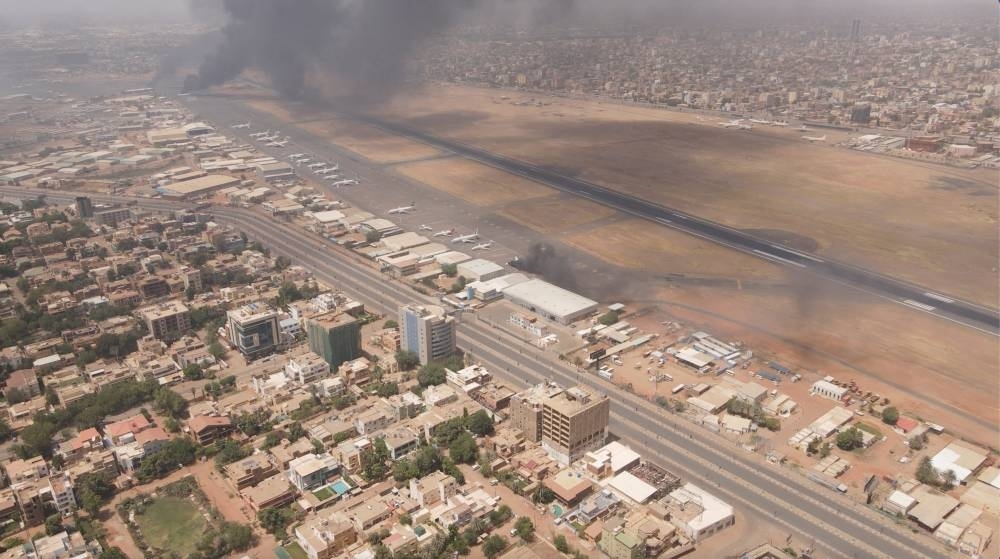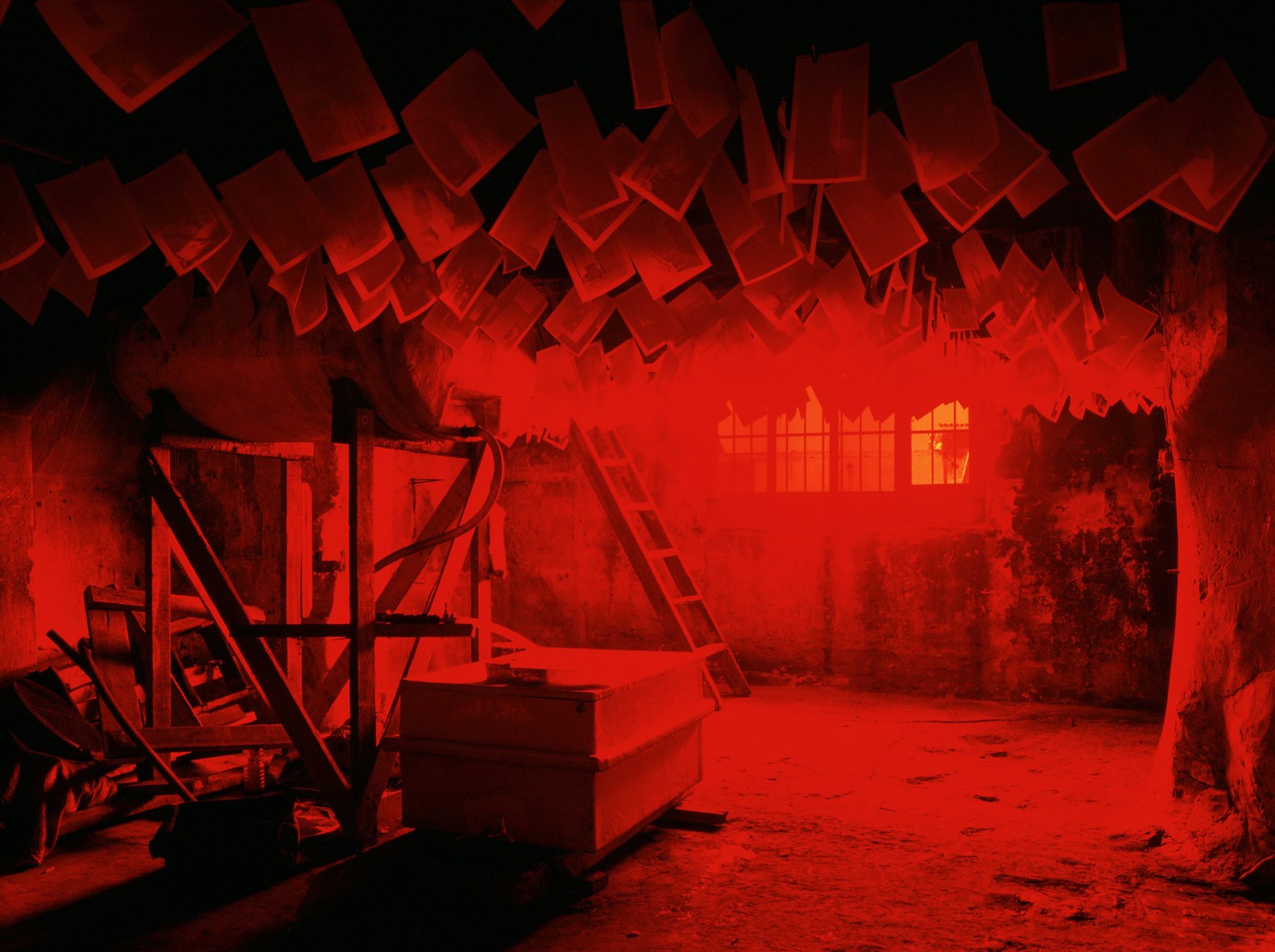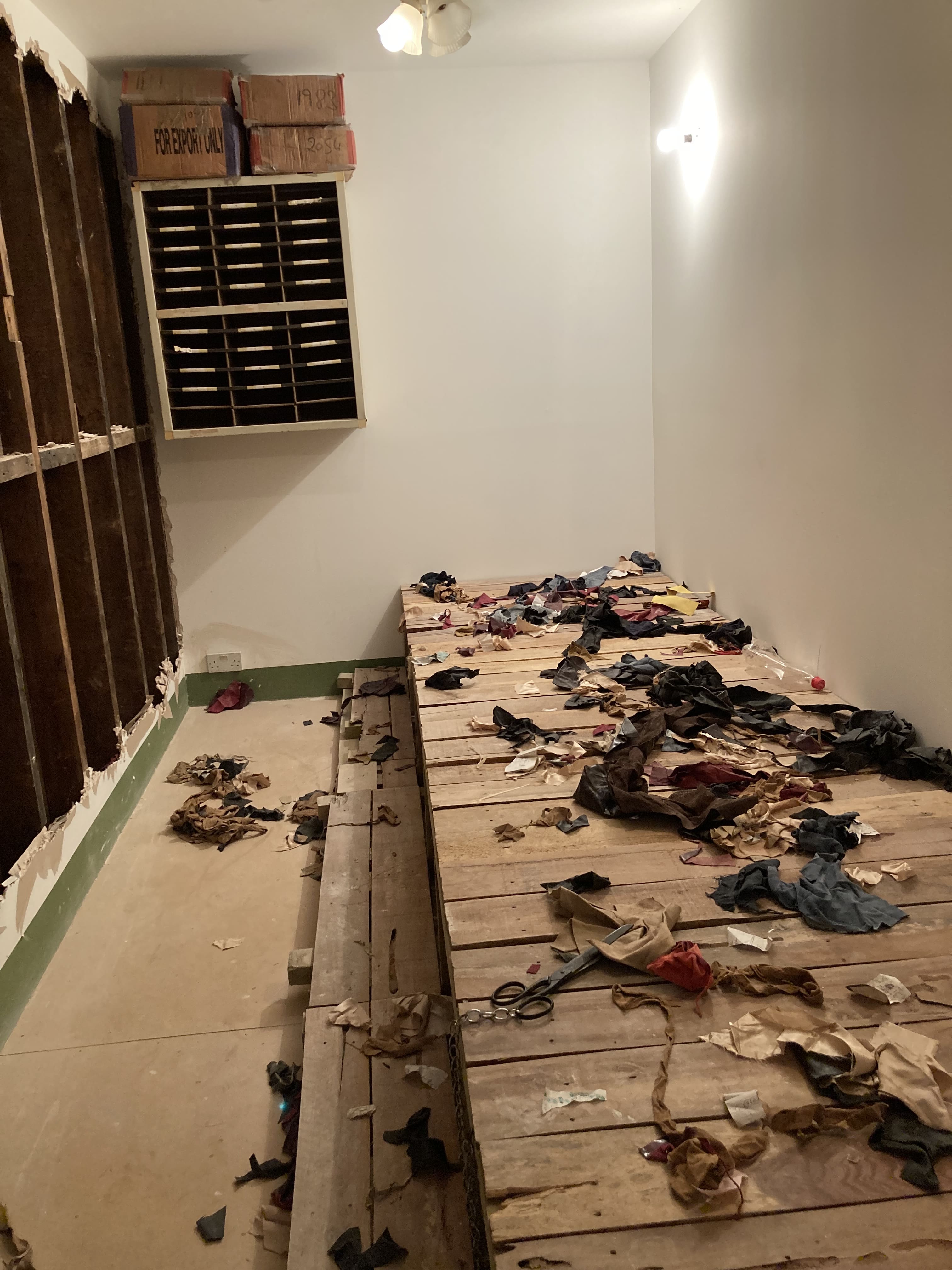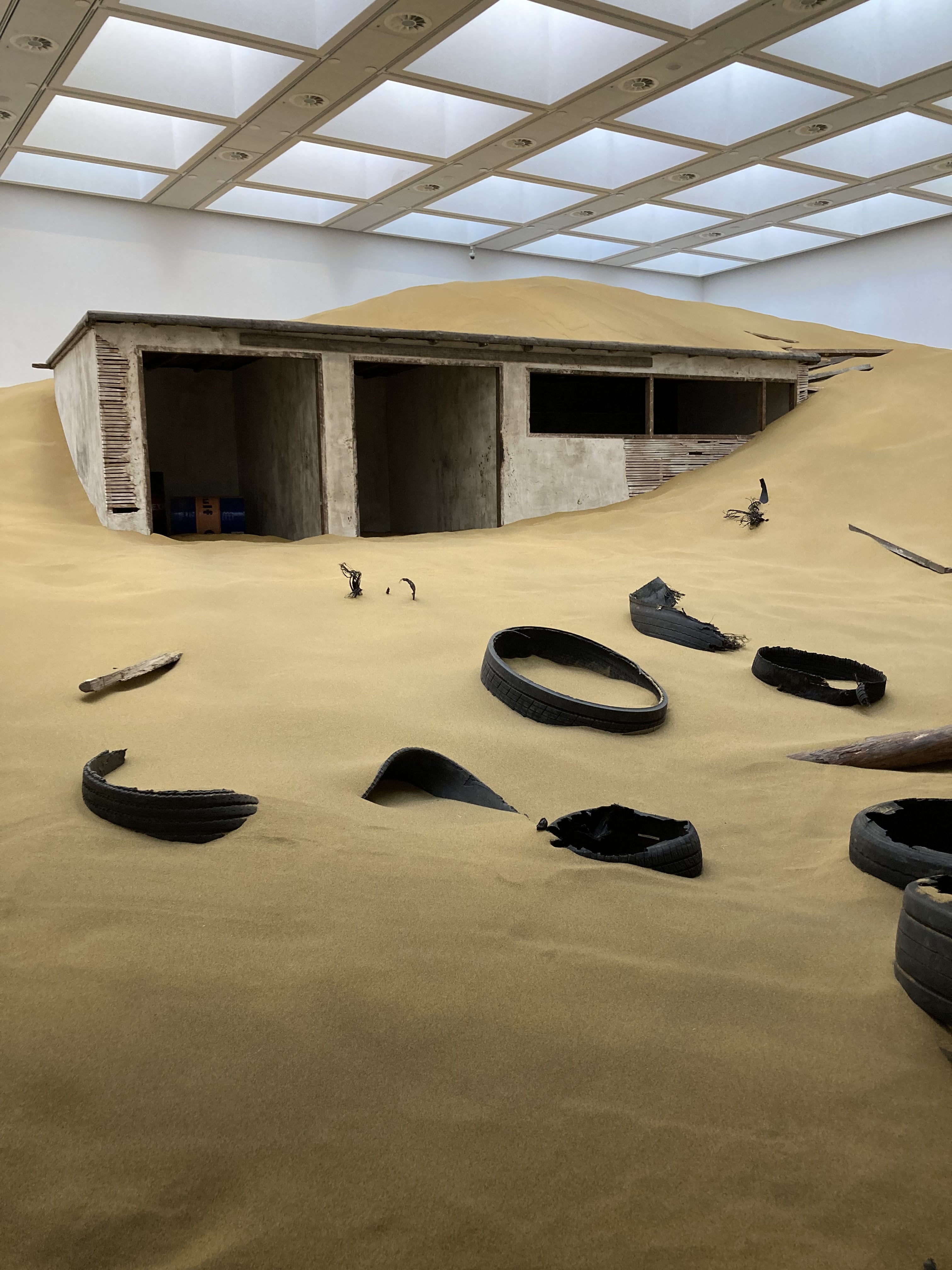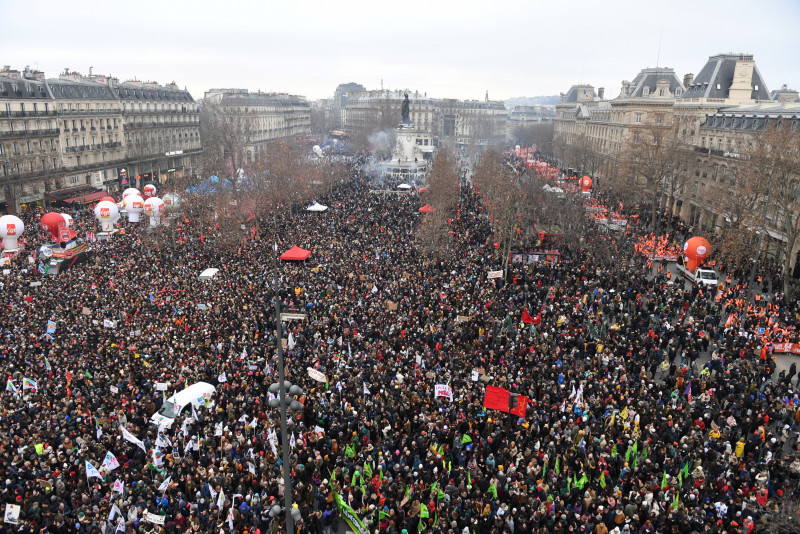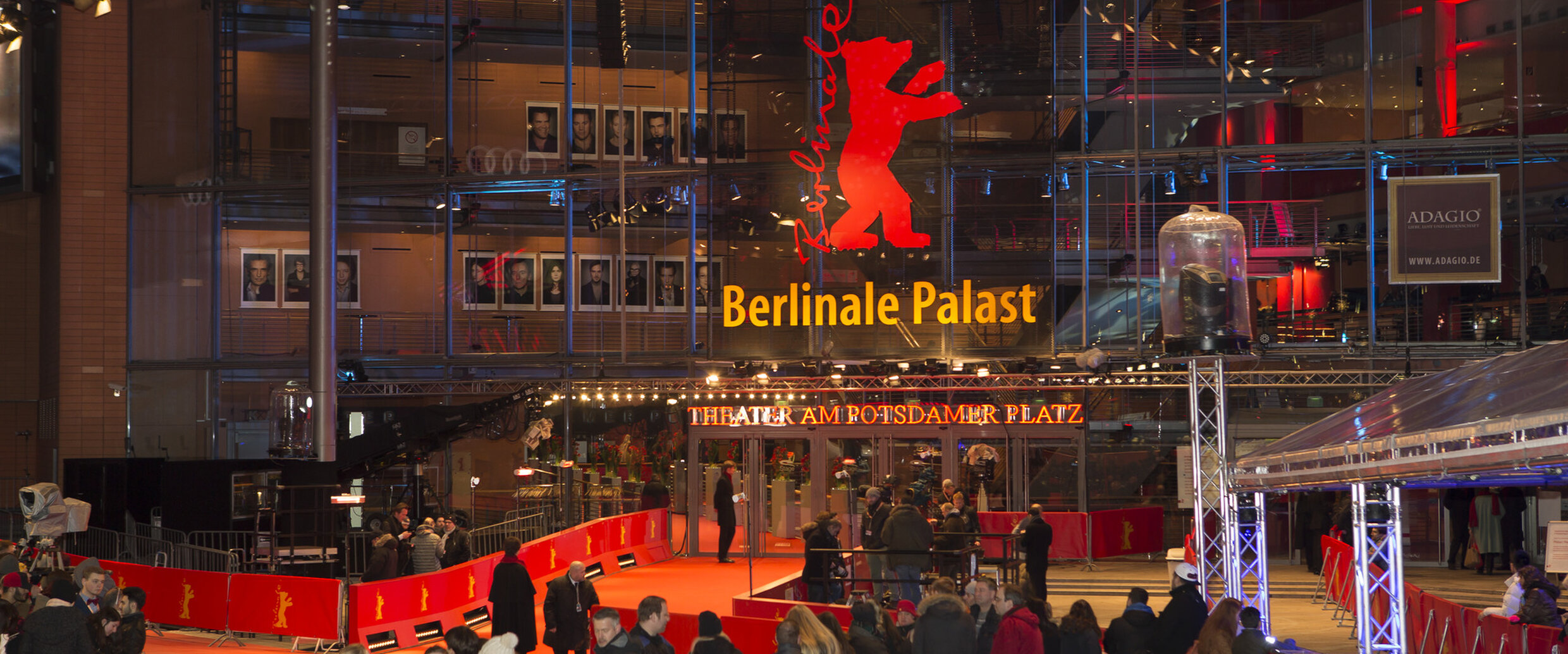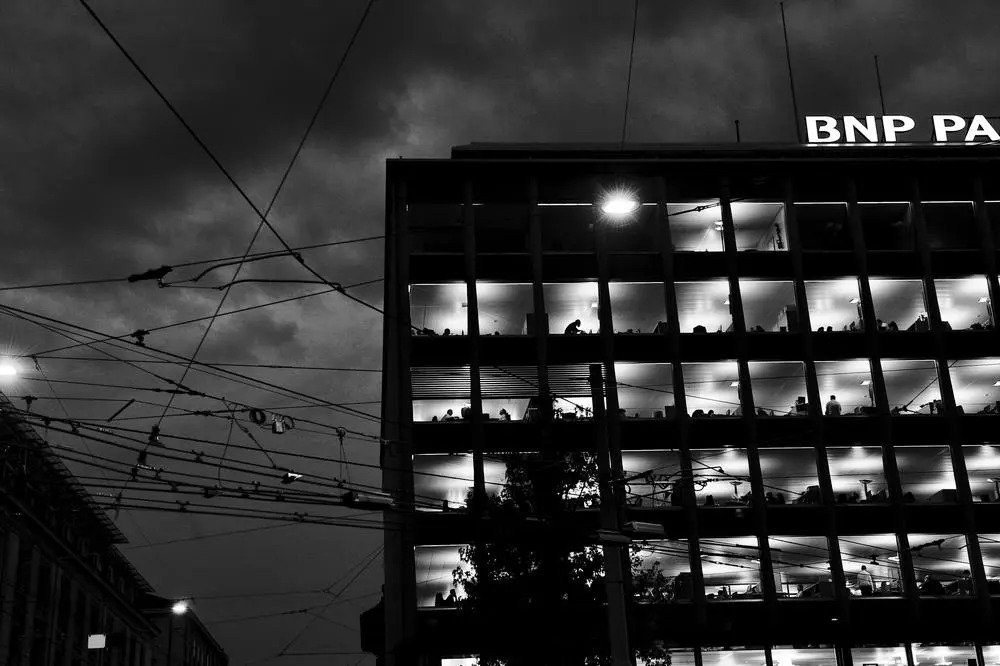On 15 April, clashes began in Khartoum, Sudan’s capital, pitting the Sudan Armed Forces (SAF), loyal to Abdel Fattah al-Burhan, the general who runs the country’s governing council, against the paramilitary forces of his deputy, Mohamed Hamdan Dagalo, otherwise known as ‘Hemedti’ (little Mohamed), the Bonapartian pretender to Sudan’s throne. Initially, Hemedti’s militias, known as the RSF, or Rapid Support Forces, seemed to have the advantage. They took control of several airbases and installed themselves in Khartoum’s residential areas, auguring a difficult campaign of urban warfare for Burhan. By the end of 16 April, however, the SAF’s superior weaponry was telling, with fighter jets strafing RSF barracks and dislodging the paramilitary force from positions around the city. Much about the situation remains uncertain, even for those on the ground. All I can tell you, one friend wrote to me, is where the smoke is coming from. Unlike during the coup d’état of October 2021, the internet is still working, yet it has brought little clarity. The facts are concealed by claims and counterclaims, all delivered via Facebook posts.
What is clear is why this confrontation erupted. Tensions between the two sides had been mounting since the signing of an accord in December 2022, the so-called Framework Agreement, which was supposed to pave the way for a transition to a civilian-led government and the departure of the military junta that had ruled Sudan since October 2021. The agreement kicked all the difficult issues into the long grass. Crucially, it did not address the integration of the RSF into the army – a development that Burhan wishes to take two years, and Hemedti, ten. The political process it initiated had the rare distinction of being both extremely vague and entirely unrealistic. Delicate compromises that would have taken months to achieve were expected within weeks, according to a timetable largely created for international consumption. These demands heightened latent tensions between the two sides, prompting the RSF to believe that Egypt – a longstanding backer of the Sudanese military – would intervene. Hemedti deployed his forces next to the Merowe airforce base at the beginning of Ramadan, providing the catalyst for the current clashes.
To understand the roots of the struggle between the army and the RSF, one must go back to the formation of the Sudanese state. Sudan’s first civil war began in 1955, the year before its independence from the British Empire. Postcolonial strife followed the lineaments of colonial rule, with a riparian elite in Khartoum and its satellite cities, dominated by a few families, fighting against the multi-ethnic peripheries of the country, which they exploited for labour and resources. One civil war (1955-1972) was soon followed by another (1983-2005). In the 1980s, a debt crisis almost bankrupted Sudan, and Khartoum struggled to pay for its army, while the conflict continued at the country’s margins, largely in the south.
From these unpromising foundations, Omar al-Bashir, then an army brigadier who took power in a coup d’état in 1989, forged an enduring form of rule. Rather than providing services in the peripheries, he used militias to wage a counterinsurgency on the cheap, setting Sudan’s many ethnic groups against each other. He privatized the state, carving it up into fiefdoms ruled by his security services, which he multiplied and fragmented in order to coup-proof his regime. The Sudanese army was soon competing with the National Intelligence and Security Service (NISS), and later had to contend with Hemedti’s RSF, to name only a few of the security organs. Each of these forces built up its own economic empire. The Sudanese military ran construction firms, mining services, and banks, while the RSF took control of gold mining and lucrative mercenary services.
Bashir made a Faustian pact with Sudan’s cities: accept terror in the country’s margins in exchange for cheap commodities and subsidies for fuel and wheat, whose import required foreign currency obtained from the sale of resources produced in the peripheries. Oil had begun to flow in 1999, largely from southern Sudan. Income from its sale subsidized urban consumption and greased the wheels of a transactional machine with Bashir at its centre, acting as fixer-in-chief for an unwieldy coalition of security services and politicians. Were the margins able to control their own resources, this machine would inevitably grind to a halt. Thus, their interests were structurally opposed to those of the centre – a class relation articulated as a geographical antagonism.
*
In 2003, as the war in southern Sudan was coming to an end, a new war in Darfur broke out. Bashir decided to repeat the trick he had used in the south – where militia forces had fought against a southern rebel force – and arm Darfur’s Arab communities to fight non-Arab rebels. Nicknamed the ‘Janjaweed’ (the evil horsemen), these militias quickly metastasized into a force of tens of thousands, which waged a vicious war against Darfuri rebels and civilians alike. This was the war that would make Hemedti. A camel-trader from the small Mahariya tribe of the Rizeigat Arabs, which live in both Chad and Darfur, he became a war chief, quickly assembling a force of 400 men. In 2007, he briefly became a rebel, but only in order to leverage violence for a better position in the government. Five years later, with Bashir’s control of the Janjaweed faltering, Hemedti presented himself as the man who could fight Sudan’s rebellions as the head of the newly created RSF, which absorbed much of the Janjaweed.
Hemedti grew close to Bashir, and quickly became his chosen enforcer. It’s said that Bashir became so fond of Hemedti he affectionately called him ‘Himyati’ (my protector). Yet while Hemedti inflicted a series of defeats on Darfur’s rebel movements, Bashir’s regime was struggling. In 2005, under international pressure, the Sudanese government signed a peace agreement with southern rebels, with the promise of a southern referendum on independence. In 2011, South Sudan voted to secede, depriving Khartoum of 75% of its oil revenue. Without dollar liquidity, Bashir’s transactional machine started to seize up.
The regime tried to diversify its economic base by selling land to the Gulf states and getting into gold mining. Hemedti led the way. He used his position as the head of the RSF to build up an economic empire, founding a holding company called al-Jineid and taking over Sudan’s most lucrative gold mine. Like all great entrepreneurs of violence, Hemedti soon expanded his interests – sending RSF forces as mercenaries to fight against the Houthis in Yemen on the Emirati payroll. He also became involved in organizing migrant passage in the Sahel: first by stopping migrants crossing the country (an enterprise once funded by the EU), and then by forcing the same migrants to buy their freedom. By 2018, Hemedti was running a business empire that included real estate and steel production, and had built up a patronage network that rivalled Bashir’s. Few in the centre were happy. For the riparian political elite and the Sudanese army alike, Hemedti was an uneducated usurper from the peripheries. Though he was an Arab, he didn’t come from the narrow coterie of families that had long ruled Sudan, and his economic empire was a direct threat to Sudanese military dominance.
Despite Bashir’s efforts to find alternative sources of foreign currency, by 2018, the economy was in a terminal nose-dive. In desperation, the dictator cut subsidies on wheat and fuel, breaking his pact with Sudan’s cities. Protests began in the peripheries and quickly spread across the country. The Sudan Professionals Association (SPA), an umbrella group of white-collar trade unions, led the way, and soon began calling for his resignation. By January, it had joined with a loose coalition of opposition political parties in a grouping called the Forces of Freedom and Change (FFC).
Protests in Khartoum were organized by a number of resistance committees and had a carnivalesque atmosphere, offering mutual aid and free healthcare in an explicit rebuke to the violence and repression of the regime. As the revolt intensified, Bashir’s backers in the Gulf prevaricated and the military became increasingly uneasy. It was one thing to kill people in the peripheries, quite another to mow down the urban youth of Khartoum, many of whom came from the soldiers’ own families. On 10 April 2019, Bashir allegedly gave an order to open fire on the sit-in. Hemedti claims he refused this order, and by the next day, Bashir was gone.
*
The security services hoped that by deposing Bashir, they could conserve control of their own economic empires. For a moment, the soldiers were heroes, and Hemedti even found some popular support in Khartoum, a city that has always thought of him as an outsider. But it was only a moment. The protesters wanted a civilian government, not a new military dictator, and rather than disperse, they staged a sit-in in front of the military headquarters in Khartoum. The security services played for time and hoped they could wear down the protesters, but as the months dragged on, the military became alarmed, and the SAF and the RSF would find common cause in repressing civilian unrest.
Early on the morning of 3 June, the security services, including the RSF, attempted to disband the sit-in. By the end of the day, approximately 200 protesters were dead and some 900 injured. Nevertheless, the protests continued. On 30 June, the thirtieth anniversary of Bashir coming to power, a million people marched against the junta. Yet the opposition’s political leadership were divided over how to proceed. Many resistance committees thought that the 3 June massacre had destroyed the army’s credibility, and that the time was right to prepare for a general strike to push them out of power. But the FFC opened negotiations with the military – which was under pressure from the US and Britain, via Saudi Arabia and the UAE, to enter into a transitional government with civilians. On 1 July, the SPA announced plans for two weeks of protests leading to a general strike. A few days later, the FFC announced a verbal agreement with the military, and the SPA changed course.
The agreements that were finally signed in August 2019 brought the FFC into a transitional government with the military, but they deferred Sudan’s most substantive issues, which were to be resolved in the distant future. Elections would be held in 2022, and until then the country would be ruled by a sovereign council composed of military officers and civilian politicians, with Burhan at its head and Hemedti as his deputy, overseeing a technocratic cabinet led by the former-UN economist Abdalla Hamdok.
Belatedly, the West became interested in Sudan’s struggle for independence. At stake was regional realignment – Sudan was to normalize relations with Israel – and the reformation of the national economy. To listen to the diplomats and World Bank officials that invaded Khartoum’s air-conditioned cafes after the revolution was to regress to the End of History. For them, a democratic utopia would emerge through austerity and the elimination of subsidies. Hamdok’s cabinet were early converts to this doctrine, even if it meant riding roughshod over the socio-economic goals of the revolution that had toppled Bashir. Upon taking office, the first Minister of Finance, Ibrahim Elbadawi – a World Bank alum – announced that the aim of the revolution was to free the country from its debt crisis by cutting subsidies.
Many of the FFC’s actions seemed designed to appeal to an international audience, and the organization was otherwise stymied in its domestic agenda by a military establishment that, far from disbanding the economic engine of the old regime, was intent on picking it over for scraps. Military finance fell outside the purview of the civilian part of the government, and security sector reform never got started. Hemedti continued to increase his military and economic power: the RSF recruited across the country, and not simply in Darfur, leading some of his supporters to claim that it was his paramilitaries, rather than the SAF, that constituted Sudan’s real armed forces.
Hemedti also took the lead in dealing with the peripheries. The August 2019 agreement had sidelined the Sudan Revolutionary Front, a grouping of many of the armed rebels from the country’s margins. Once again, power had been hoarded by the centre. For this reason, some rebel commanders saw the FFC as merely the latest iteration of riparian rule, and hoped that while Hemedti had inflicted grievous defeats on them during the previous decade, he might be someone with whom they could do business. While it was the civilian government that formally took the lead in subsequent negotiations with the rebels, Hemedti exercised informal control over the process. In October 2020, a deal was signed between the transitional government and the rebels that guaranteed them seats in government and promised greater political devolution. In the end, almost none of the agreement’s more ambitious measures were implemented. Instead, the rebels’ integration into the Khartoum government allowed Hemedti to use Bashir’s playbook – fragmenting opposition forces and setting them against each other – against his rivals. From October 2020 onward, Hemedti used the rebels to split the centre.
At this point, public frustration with Hamdok’s government was growing, with some protesters calling for his resignation and the military heightening the pressure. The rebels, now incorporated into the government, organized Potemkin protests outside the military headquarters, mimicking those that had led to the fall of Bashir. They claimed that Hamdok’s government had lost its way: it was only interested in the centre, not in justice for Darfur or in changing the geographical inequalities that had long blighted the country. There was much truth to this rhetoric, but beneath it lay a different political motivation – to destabilize the country and lay the groundwork for a coup.
*
That coup, long predicted, came as a shock only to the apparatchiks of the World Bank and International Monetary Fund, who never imagined that the military could willingly forgo the international investment that would dry up in the event of a power grab. Burhan and Hemedti, promised funds from the Gulf, had no such hesitations. On 25 October, Burhan thanked Hamdok for his service and then declared a state of emergency. International commentators bewailed a season of coups, and placed Sudan in a motley line-up next to Myanmar, Mali and Guinea. But in truth, Sudan’s coup was never going to usher in a military dictatorship in the Egyptian mould. Unlike Bashir’s regime, which had ruled with the assistance of Sudan’s Islamists, at least for the first decade, Burhan’s junta had no ideology and no real social base. Their takeover was effectively a negotiating move, designed to push Hamdok back into government with a weakened cabinet while preserving the military’s powerbase.
Hamdok duly returned to office a month after the coup, only to resign amid continued street protests six weeks later. By October 2022, it was clear the military regime was flailing. The Gulf had failed to deliver on its financial promises to the junta, inflation and hunger were spiralling, and there was no let-up in public demonstrations. The coup proved that the basic antagonism of the Sudanese revolution remained intact. On one side was Bashir’s security council (only nominally transformed in the absence of Bashir himself). On the other, with the FFC sidelined, were the urban citizens of Sudan, wedded to civilian rule and represented by the various resistance committees.
For the Americans and British, the military were not going anywhere, so realism required a new civilian-military transitional government. In diplomatic circles, Burhan isn’t considered an Islamist, and is therefore someone whom the West can tolerate. For its part, the junta reckoned the best way to preserve the coup was to end it and form a new transitional government, on which the military could subsequently blame Sudan’s deepening economic woes. This was the background to the Framework Agreement, signed on 5 December 2022, which brought together some of the FFC and some of the Sudanese political parties in a new government with the military. UN officials and Western diplomats pronounced their satisfaction – while, throughout Sudan, the deal was met with protests.
Yet again, the agreement refused to face up to the country’s most pressing issues. The dynamics of the security sector, the place of the RSF, and the role of the military in government were all left to Phase II, which was given the absurdly short time-frame of one month. The deal foregrounded Hemedti, who was at pains to criticize the coup, and attempted to position himself closer to the civilian FFC. This worried Egypt, which feared the marginalization of the SAF and so established a separate negotiating framework in Cairo, including some of the rebel groups that had joined the government prior to the coup.
With the signing of the Framework Agreement, the civilian-military opposition that had previously dominated Sudanese politics became considerably more complicated. Burhan and Hemedti began searching for both civilian and rebel support, while also looking for regional backers. This meant the reform of the security forces was almost impossible to envisage, as the country’s two main military actors were increasingly at loggerheads: Egypt aligned itself with Burhan while Hemedti was in business with Russia’s Wagner Group.
By March, workshops were provisionally underway on the deeper issues affecting the country’s conflict, including the place of the RSF within the Sudanese military. The head of the UN mission to Sudan, Volker Perthes, announced to the UN Security Council on 20 March that he was ‘encouraged by how little substantive difference there remains among the main actors.’ Yet the rest of Sudan was not convinced. My friends who live in Khartoum felt that a conflict between Burhan and Hemedti had become inevitable.
*
And so it was. The can, kicked down the road for so long, hit a wall. Burhan expelled representatives of the RSF from a meeting on security sector reform, while the RSF started building up its forces around Khartoum in preparation for clashes. The arbitrary timetables of the diplomats, who wanted a government by the end of Ramadan, no doubt intensified these divisions. Now, as fighting enters its third day, there is little chance of a ceasefire in the immediate future. The rhetoric of both men is bellicose. For Hemedti, this is in all probability his first and only shot at rule. If he is defeated, and the RSF is dissolved into the army, his support base will be eroded and the dissolution of his economic empire will follow. For Burhan, backed by Egypt, there remain more options for negotiations, but the depth of rancour felt by the army against the Darfuri upstart should not be underestimated. Despite the SAF’s strength – and Egyptian support – it is unlikely to be an easy battle. The RSF are embedded in the civilian areas of Khartoum, and some of the most deadly fighting has already occurred in Darfur, on Hemedti’s home turf.
Whatever the outcome of the conflict – and the likelihood is that it will lead to a devastating loss of life – it will mark a new era for Sudan. The three previous civil wars were fought in the peripheries, and preserved the geographically-inflected class relations associated with Bashir. By contrast, this civil war – if that’s what it becomes – is taking place in Khartoum and its satellite cities. Hemedti, who came to prominence through Bashir’s transactional politics and his instrumentalization of militias, now has a political life of his own. His outsider status is a challenge to Sudan’s riparian elitism – one that is playing out in the streets and skies of its urban spaces.
Read on: Alex de Waal, ‘Exploiting Slavery’, NLR I/227.
